Filed under: General Health, Nutrition, Recipes
Tuna seems to be a food that falls on two opposite ends of the spectrum. Some people eat it like it is going out of style, while some avoid it like the plague. Tuna is a great source of protein, the cancer-fighting selenium, vitamin B-12, with some omega-3 fats. These are the benefits of tuna. The downside is that it contains a fair amount of mercury, depending on the type.
The two real options are white tuna, and light tuna. Though there are variations of each, these are the two main differences. White tuna comes from albacore tuna, a large species with a fair amount of mercury.

Light tuna usually comes from skipjack tuna, a smaller species with significantly less mercury content. Though a small amount of light tuna also comes from yellowfin tuna, which has roughly equal mercury content to that of albacore.
The albacore has a higher fat content and therefore more omega-3′s and fat-soluble vitamins, but I would say this is off-set a bit by the higher mercury content. For adults 1-2 cans of albacore per week is completely acceptable and well below the risk area of mercury issues. For pregnant women and children, please refer to this stance of the FDA. While I do think the FDA is very conservative in their advice, you can obtain all the nutrients in tuna with less risk than eating more than 1-2 cans of albacore per week.
Light tuna has a significantly lower fat content, meaning only small amounts of omega-3′s, while also only having about 1/3 of the mercury content on average (unless from yellowfin). Light tuna can be eaten more often than albacore due to its lower mercury content, so 3-4 cans per week should not be a problem whatsoever.

The last conundrum with tuna is that white tuna tastes so much better than light. I usually suggest using an organic, canola oil based mayo (preferably the canola oil being cold pressed) or a mayo made from extra virgin olive oil. You can even make your own mayo, with this recipe that I really like:
- 1 omega-3 or pastured egg
- 1 tablespoon lemon juice
- 2 teaspoons Dijon mustard
- Redmond Real Salt and freshly cracked black pepper
- 1 cup extra virgin olive oil
I hope that helps clear up some of the confusion surrounding tuna safety, intake, and the best choice to make.
Filed under: General Health, Nutrition
I work with a ton of high school athletes on their nutrition, it is a daily battle just trying to get these kids to wake up 10 minutes earlier to have something, anything for breakfast, let alone a good one. I have come up with lots of tricks and ideas to make it happen but it is certainly not easy. For you parents out there struggling with the same problem, here are some of my top tips to improve your kids school-time eating habits.
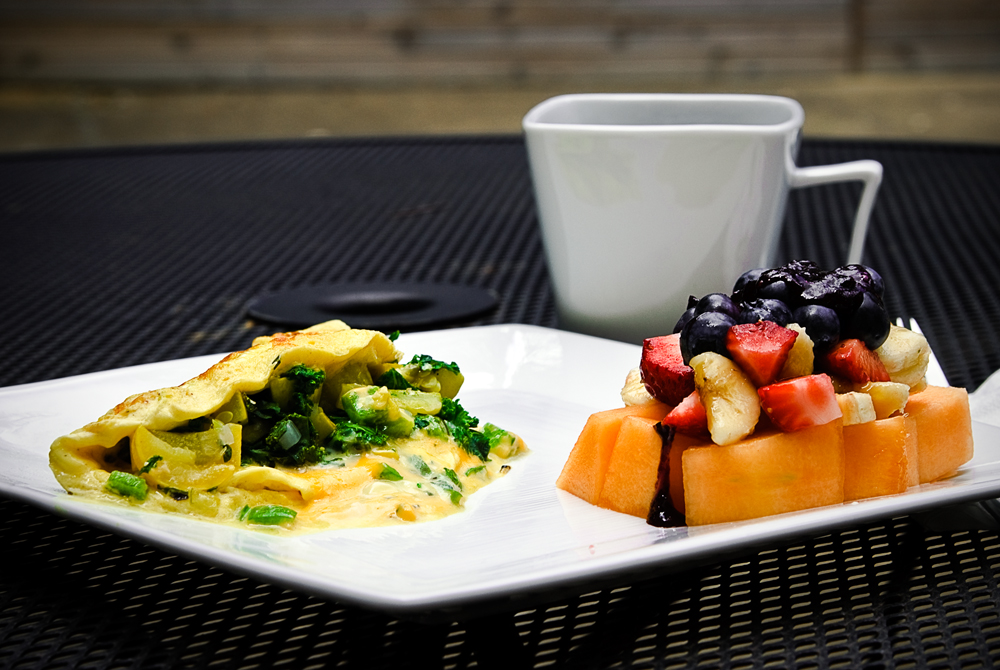
Breakfast Ideas
Ideally if your child is an early riser, teaching them how to cook is a tremendous opportunity and great life skill. Show them how to make scrambled eggs or an omelet and breakfast is set for life. Rare is this the case unfortunately.
- If you are willing to make them breakfast, or if they cook themselves, here is a quick but healthy way to start the day: 3-4 whole pastured or omega-3 eggs prepared by choice, 1 Ezekiel English muffin topped with natural peanut butter and chopped banana and sprinkled cinnamon, a few glasses of water. Protein, healthy fat, high quality carbs and a piece of fruit; it’s a beautiful thing.
- For the kid who has to make his own in approximately 2 minutes I usually recommend a delicious breakfast smoothie. Something along the lines of 1 blueberry Greek yogurt, 1 scoop vanilla protein powder, 1 cup frozen berry medley, 2 tbsp walnuts, and 1 tbsp milled flax seed, with roughly 4oz water. Quick, easy and provides a ton of quality nutrition to start the day.
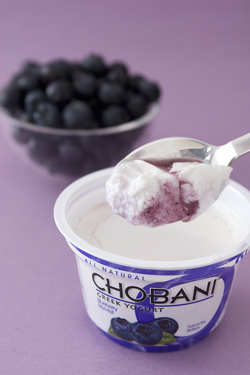
School Snack Ideas
It can be tough for a lot of kids to squeeze in a snack at school, often due to no snack break (which I think is terrible) or lack of preparation (which just pisses me off). When I was in high school we had snack break at like 9:15 everyday, and I crushed a chocolate chip muffin everyday. Good stuff huh? Anyway, here are some school friendly snacks to get your kids eating right.
- 2-3 pieces string cheese (ideally organic or if possible grass-fed) with an apple. Quick, easy and surely better than a chocolate chip muffin.
- 2-3 hardboiled eggs (omega-3 or pastured) with some baby carrots and hummus.
- 1 Greek yogurt with celery sticks and 2tbsp natural peanut butter.
Lunch and Dinner should be healthy options based around protein, some healthy fat, maybe some healthy carbs, and lots of fruits and vegetables. I gave more specific guidelines here and here.
If you want more quick and delicious recipes for your entire family to enjoy I highly recommend checking out Gourmet Nutrition. It is the best cookbook on the market and can show you how to really spice up your meal planning. Enjoy!
Filed under: General Health, Nutrition
In the past I have blogged all about why I think probiotics are so essential for optimal health (here and here). Due to this strong belief in there effectiveness I eat a 16oz Greek yogurt everyday. I toss in some blueberries, chia seeds, and some mixed nuts for a delicious and satisfying meal.
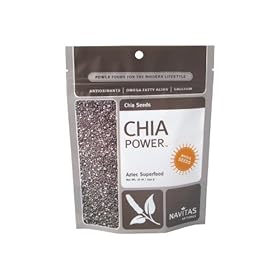
Keeping the GI tract healthy is of utmost importance to overall health. Here are some really important and interesting points about why:
- The gastrointestinal system comprises 75% of the body’s immune system.
- There are more neurons in the small intestine than in the entire spinal cord.
- It is the only system in the body that has its own, independently operating nervous system, called the enteric nervous system.
- If you stretched out the gastrointestinal system in its entirety, it would have the surface area of a regulation sized singles tennis court.
- There are over 400 species of microbes living in your gut, totaling over 15 pounds of mass and containing more bacteria than there are known stars in the sky.
The last point relates a lot to the importance of probiotics and their impact on your health. The fact that there is more bacteria in your GI tract than there are known stars in the sky is insane. So lets ensure that it is beneficial bacteria making up that population. You can do that by eliminating processed foods, eating a lot of fruits and veggies and by consuming cultured foods like yogurt and supplementing with probiotics.
A brand I really like is Integrative Therapeutics Probiotic Pearls. I have found that just consuming one of these every day has greatly improved my digestion and the digestion of my clients.

Filed under: Nutrition, Recipes
My fiance and I were perusing through Gourmet Nutrition the other day and came across the Banana Nut Squares. We hadn’t tried these yet, they looked delicious and we happened to have 3 bananas getting pretty ripe sitting in our fruit bowl. So we set about making some for the week.
Since we had 3 very ripe bananas, we had to double the recipe. This was fine with me because it gave me more wiggle room to modify it to my liking! The recipe (doubled) called for 4 cups of walnut meal. I love walnuts and all, but that seemed a bit over the top. So we got creative. I am more of a little of this, a little of that kind of cook, so we didn’t actually measure everything else we added, we just made sure it came out to about 4 cups total. We used roughly 3 cups of walnut meal, maybe a little less. The last cup was made up of chia seeds, milled flax, and unsweetened shredded coconut. This gave us a little more fiber, an increase in omega-3′s, less omega-6′s and a little healthy dose of saturated fat to top it off. Needless to say, they came out awesome.
Here is the recipe, modified BSP style:
Banana Nut Protein Bars
- Banana, very ripe and mashed – 1/2 cup
- Whole omega-3 (or pastured) eggs – 2
- Cottage Cheese – 1/4 cup
- Rolled oats – 1/2 cup
- Walnut meal – 1 1/2 cup
- Milled flax seed – 2 tbsp
- Chia seeds – 2 tbsp
- Unsweetened shredded coconut – 1/4 cup
- Vanilla whey/casein protein blend – 6 scoops
- Vanilla extract – a touch (we didn’t measure)
- Baking soda – 1/4 tsp
- Redmond Real Salt – 1/8 tsp
- Extra Virgin Olive Oil Spray (from the Misto sprayer)
Pre heat your oven to 350 degrees. Whisk the eggs and combine with the banana, cottage cheese and vanilla extract. Combine all dry ingredients and stir until mixed. Slowly add wet ingredients to dry and combine until well mixed. Be patient, it takes a while. Lightly coat a 9×9 pan with the olive oil. Bake for 10-15 minutes. Really make sure to not overcook as they will dry out. This makes 4 large or 8 small servings. Enjoy!
For more great meal and snack ideas like this, check our Dr. Berardi’s incredible Gourmet Nutrition 2.0.

Filed under: General Health, Nutrition
It seems lately that coconut water is all the rage for post-training replinishment. Due to its natural sugar content, high electrolyte content, and general overall deliciousness, people are declaring coconut water to be the greatest post-training drink ever. Is this actually the case?

I will end the suspense now, as no, it is not. While I do not have an issue with people consuming coconut water in conjunction with some protein and maybe a little healthy fat, it is not the holy grail of hydration some make it out to be.
I will state that I am a huge fan of coconut. I love the oil (extra virgin organic kind), I love it unsweetened and shredded, and even the milk to a degreee (again the organic kind). Coconut is a great food, and the water is no exception. The only issue is that it is not cheap, and is it actually any better than say a banana post-training? I am not convinced.
In my mind for most people there is no need for anything too special post-training. For general fitness enthusiasts what do you need after training? You need a blend of high quality proteins, preferably anywhere from 20-40+ grams, depending on size, training session and goals (a whey and casein blend works wonders here). You also may need a blend of high quality carbs, though they don’t need to be fast acting (unless you have another intense long-duration session within 8 hours), and need really depends on goals. A little healthy fat doesn’t hurt, and some has been shown to actually increase muscle protein synthesis. Lastly some electrolytes to top of the re-hydration process would be a good idea as well. We want all this, but we also want it to be reasonably priced. You could make an insanely expensive version, but is that extra cost really worth the assumed extra benefit? Who knows.
In my humble opinion a great example of proper post-training nutrition (whether after a long run, a sprint session or an intense lifting session) would be something like this:
- 1 cup 2% plain Greek yogurt
- 1 scoop Vanilla whey protein
- 1 banana
- 1 cup frozen strawberries
- 2 tbsp chopped walnuts
- ice cubes
- small amounts of water if desired
- blend
To me that is an awesome post-training shake. Granted this is more of a caloric intake for a decent sized male, women may want to halve this. It provides everything we stated we needed for recovery. You have a nice blend of protein, roughly equal amounts of whey and casein. You also get a nice blend of carbs, with mainly glucose and fructose, providing muscle and liver glycogen. This smoothie also provides a very nice assortment of electrolytes and minerals including sodium, potassium, magnesium and calcium in abundant quantities. The yogurt and walnuts provide some awesome saturated fat and omega-3′s. For some nice bonuses, the fruit also gives us a nice dose of antioxidants after a stressful training session, the blend of glucose and fructose (rather than just straight glucose) increases hydration status, and the yogurt tosses in some gut-friendly bacteria.
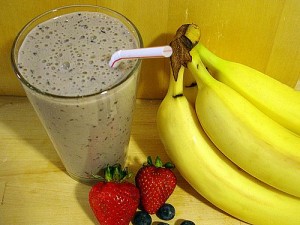
All in all, I think this provides us with everything we need to recover, is a reasonable price and is certainly healthier than just whey with some simple sugars. It also provides more benefits to me than just coconut water. You can also make this shake even healthier, depending on your budget. You can make the yogurt organic or even raw (regardless it should be from a company that does not use hormones), you can choose whey from grass-fed cows treated at low temperature, you can choose organic bananas, and organic local strawberries. The list can go on. Essentially you can keep adding in luxuries if it is within your budget, but they aren’t completely necessary.
That is also how I feel about coconut water. It is a luxury, not a necessity. If you can afford it, great, toss it in a smoothie and enjoy it. If it is outside your budget, then I don’t see this tremendous need for it. It is a fine product, but, like most things in the fitness world, it is not the holy grail many tout it to be.
Thoughts?
Filed under: General Health, Nutrition, Recipes
I am reviving an old formula for today’s blog, posting a delicious and healthy recipe. A while back I blogged about some of my favorite condiments, one of them being hummus. As most of you probably know, baby carrots and hummus is one of my absolute favorite snacks (along with some protein!).
Because of this love with hummus one of our CP clients, who is an amazing cook, gave me her home-made hummus recipe that I am going to share here with you guys. Thank you Nancy!
Without further ado:
Tuscan Hummus
- 1 large can chick peas
- Juice of 1 lemon
- 2 tbsp extra virgin olive oil
- salt and pepper to taste (lots of pepper)
- pinch of fresh garlic
- 1 cayenne pepper
- 1 bunch of steamed Tuscan kale
Add some water to blend, add slowly to emulsify and get the correct consistency.
Steam the kale, let it cool and squeeze out the liquid.
Puree all ingredients in a blender and season to taste. Add water very slowly to get correct consistency.
Allow to sit overnight and enjoy!
Filed under: Nutrition
One of the most popular supplement choices around today are branched chain amino acids (BCAAs). These BCAAs are three essential amino acids found in high concentrations in things like whey protein, casein protein and meats. People use them for muscle building and during fat loss phases, and there is some research backing up their validity. But do they work as some people claim, or they are are they just another overpriced moderately useful supplement to complement a balanced diet?

The most popular ways of taking BCAA’s are either during training, or between meals. Are either of these applications beneficial? First let’s look at taking BCAA’s around training for muscular growth.
A good practice for most people would be to have protein surrounding your training, to enhance recovery and prevent protein breakdown. If adequate protein is consumed, for example 20g of whey protein before training and 20g of whey post training (for simple numbers), you get ample amounts of BCAA’s (~10g). If adequate protein is consumed throughout the rest of the day, are a few extra grams of BCAA’s really going to make a significant impact upon your gain in muscular size? Unfortunately, the research is not very clear on this. Most research done on BCAA’s does not use an adequate amount of protein intake around training or throughout the day. While it may show that BCAA’s are beneficial, this lack of adequate protein is a HUGE flaw in the research. Without adequate protein intake the BCAA’s make up for that lack of protein, and therefore they appear very beneficial, promoting increases in muscle gain over just the control. With adequate protein intake (and therefore a sizeable BCAA intake) I have my doubts that the impact will be anything above negligible.
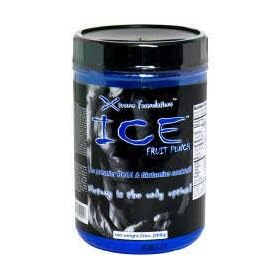
Now let’s look at taking BCAA’s while dieting, though granted there is not a lot of research on this topic either.
Though there isn’t a lot of hard data, there is a lot of anecdotal evidence that consuming BCAA’s while dieting can improve fat loss and help maintain lean mass. When dieting, adequate protein intake is even more important than when trying to gain mass. When in caloric excess, carbohydrates are protein sparing and they can help prevent the oxidation of protein as an energy source. When in a caloric deficit, which is often times achieved by decreasing carbohydrates, protein is now less protected. So increasing protein intake or ensuring adequate protein intake while dieting is incredibly importance to retain lean mass. This will help to make sure that lean mass is preserved by having dietary amino acids oxidized, not body amino acids, and branched chain amino acids are the best dietary sources of amino acids to be oxidize for fuel. In other words, they are more easily oxidized than other amino acids, and therefore preferred by the body. This can be very important when dieting especially around training. When dieting BCAA’s are a low calorie energy substrate that also enhance muscle protein synthesis, seeming like a win win situation. So are BCAA’s magic when dieting as your peri-training nutrition? Maybe, maybe not, but they at least provide some benefits while providing significantly less calories than a protein and carbohydrate shake.
When dieting BCAA’s are also often consumed between meals to also preserve that lean mass. Though again little to no hard data exists on the topic, there is a mountain of anecdotal evidence that for some unexplained reason sipping BCAA’s between meals not only helps preserve lean mass, it can help promote fat loss. The theories abound, but no one is really sure why, or if it is still possibly a placebo effect. Maybe these people are just training harder or sticking to their diet better because they feel less hungry and more energized? Who knows. Regardless of why, it does seem to work and it may not be a terrible idea.
In conclusion, I think BCAA’s are a moderately beneficial supplement that have applications at certain times and/or phases of the year. If you are dieting hard, or in an extreme caloric deficit BCAA’s can be very handy to preserve that lean mass and potentially increase fat loss. For someone trying to gain mass I think BCAA’s are just an expensive addition to someone in a caloric excess and they have a negligible impact on increased muscle protein synthesis, compared to just ensuring adequate protein intake since that will be high in BCAA’s already. Spend that money on actual food and just watch yourself grow.
Filed under: General Health, Nutrition
Today we are going to discuss another fantastically healthy food that is currently under the radar but definitely gaining steam in the nutrition world. Today we are going to talk about Chia seeds.

May of you have probably heard the name chia before. Back in the day the seeds were popular to use in the those little rubber pets that sprouted. The chia seeds I am talking about are just like the little sprouting pet things, except you will actually want to eat the seeds, not the sprouts. Chia seeds provide tons of nutritional benefit and are a great addition to yogurt, oatmeal, smoothies and more.
1oz of chia seeds contains 9 grams of fat, 5 of them being from the extremely healthy omega-3 family. That is an even better source than flax seeds! That same 1oz contains 11 grams of fiber! That is an astounding number, and for those of you who struggle on low-carb diets to get enough fiber, this is a perfect food to help improve that intake. The fiber is also mainly soluble, so somewhat like glucomannan, it expands and forms a slow-moving gel, helping to keep you fuller longer.
Chia seeds are also very good sources of calcium, phosphorus and manganese, and they have even more antioxidants than flax seeds. These are definitely some nutritious little seeds.
Clearly the nutrition facts of chia seeds look very promising, but does this actually translate into real-world results?

Unfortunately there is not a whole lot of research on chia seeds. What research there is does look promising. In 2007 there was a study on a small sample of diabetics. Patients who consumed up to four teaspoons per day (not that much really) reduced their blood clotting factors by 20%, decreased inflammation by 30%, increased omega-3 content by 80% and decreased their systolic blood pressure by 6 points.
For full disclosure, that research was sponsored by the company who sold the chia seeds used in the trial. I am not stating that influenced the results, but it certainly makes me a little leery and I would definitely want to see this research duplicated. Regardless, it is promising none-the-less.
There is also some recent research on rats. As I have stated before rat digestive physiology is very similar to humans, which is why they are used a lot in nutrition trials. The consumption of chia seeds by insulin resistant rats helped to normalize their high triglycerides, insulin resistance and bodyfat. Now these rats were consuming rather large amounts of chia seeds, and this is very, vert preliminary stuff, but there is no reason to believe that chia seeds couldn’t be a very healthful addition to the diet.
In conjunction with flax, I think chia seeds are a great and easy source of omega-3 fatty acids and fiber. For people trying to diet, the ability of the soluble fiber in chia seeds should also help to keep that hunger at bay, and it is a pretty good alternative to glucomannan.
While certainly not the cure for cancer (unfortunately no single food is, no matter what someone tries to tell you) chia seeds certainly seem to have a nice little place in a balanced and healthful diet.
For more info, check out Dr. Jonny Bowden’s video on the benefits of chia seeds.
Filed under: General Health, Nutrition
As the CP Nutritionist I get a ton of questions from clients about all sorts of random crap they are bombarded with. Some of these items are ok, some are not so great, and they turn to me to help them figure it out.
One of the most common examples is a product called Mona-Vie. Mona-Vie is a cocktail of a ton of different fruit juices, with its big star being acai juice. Acai juice has come to the forefront of mainstream fruit juices, being lauded by people like Oprah and Dr. Nicholas Perricone as a near miracle juice. Does acai juice, and in turn Mona-Vie, live up to the billing?

The research, unfortunately, says no. Acai may be a pretty damn good fruit, and it certainly has plenty of antioxidant properties, but antioxidant capacity is just one measure of the healthfulness of a food. The ORAC (oxygen radical absorbance capacity) value for acai is sky high, and this is highly touted for its application in juice blends and Mona-Vie. The problem is that ORAC is just a general, non-specific measure. ORAC doesn’t account for phenolic content, or other powerful phytochemicals that exert great health effects independent of oxidation. It is just one number among many methods to determine the benefits of a food.
One study sought to look at fruit juices from more than the ORAC angle. Seerem et al used ORAC and 3 other antioxidant tests with names too complex to worry about. They also took into account the ability of the juice to lower the oxidation rate of LDL (a powerful marker of heart disease), total polyphenol content and the actual potency of the antioxidants.
Guess what didn’t rank #1? Acai juice. It actually came in a respectable 6th. The big finisher? Pomegranate juice. Followed by red wine, concord grape juice, blackberry juice, and blueberry juice all ahead of acai.

So is acai the Superfood it is promoted to be? No. Is it still a potentially healthful addition in small amounts to the diet? Absolutely. Is Mona-Vie worth the $40-50 it sells for, or are you better off with a few ounces of some pomegranate juice every morning? My bet is on the pomegranate, which has some amazing clinical research proving real world efficacy, not theoretical lab analysis. There are a ton of healthy fruits (check out my write up on plums and kiwi) and veggies that provide astounding benefits, so don’t get locked into just one.
There is nothing wrong with wanting to get more fruits and veggies in your diet, and there are plenty of greens products to choose from that contain more than just juice, but don’t overlook just actually eating more real fruits and veggies. If raw veggies aren’t your thing, try a little juicing, here is a great recipe I stole from Jonny Bowden:
- 1 cup spinach
- 2 celery stalks
- 1 pear or apple
- ginger to taste
Filed under: General Health, Nutrition
I recently got an email from a reader that intrigued me. He wanted my input on an article he had read about organic food.

The article started with a very bold statement. It claimed that based on a “major” recent study just published, organic food has no nutritional or health benefit over conventionally raised food. This major recent study was a meta-analysis. This means thats the researchers gathered all the data on the subject that they deemed relevant, which is to say they may have omitted studies that could have gone opposite to their conclusion, and came up with a conclusion based on all the pooled results.
Do not get me wrong, meta-analysis is very important as it allows us to gather all of our data and develop conclusions that shape our health policy, but it can be a very biased method depending on the researchers conducting the analysis, and who is funding it.
The researchers did admit that there were a small number of differences in nutrient levels seen between organic and conventional produce, but they were insignificant to overall health. The truth is I wouldn’t really argue with him on that point. The nutrient differences seen are not going to make or break your health. I don’t think that personal health differences should be the main reason why we purchase organic foodstuffs anyway.
While it is true that on an individual level the infinitesimal amount of pesticides and herbicides ingested from conventionally raised produced probably won’t have much of a negative effect on our health or well-being, the slightly greater nutrient content may or may not have any truly significant direct health benefits either.
The true benefits of choosing organic are that you are choosing a food that is raised in a manner that is sustainable and healthy for the environment. It is a method of food production that does not cause frogs to become asexual or deformed due to the not-so-infinitesimal amount of pesticides and herbicides and ammonium fertilizer run-off into streams, ponds, lakes, rivers and oceans.

The amazing fact is there is a dead-zone in the Gulf of Mexico that ranges from 6,000 to 8,500 square miles (about the size of New Jersey) where due to the toxic run-off from conventional agricultural production, oceanic life can no longer be supported. The chemicals cause the gulf to be a hypoxic wasteland where only algae can proliferate, wreaking havoc on the surrounding environment, as well as the fishing industries. This is the most well known of 250 dead-zones like this around the world. 250. That is an astounding number. But conventionally raised food is definitely just as healthy for us as organic. Right.
The problem with reviews like the one that started this rant is that it only looks at direct impact to human health, not the big picture. So, on an individual basis is organically grown food any healthier for human consumption? The answer is probably no, it probably isn’t much healthier. On a world basis, for the next generation, and for our food production as a whole is organically raised food any healthier for human consumption? The answer is a resounding YES. To make an even better choice, try buying local, seasonal and fresh produce from local farms and farmer’s markets.
I know I am fond of this statement, but it is important to keep the big picture in mind, we need to not miss the forest for the trees.
To read more about why our conventional food production sucks, please check out Michael Pollan’s amazing The Omnivore’s Dilemma.
For more reading on the problems to frogs.
For more reading about the Gulf of Mexico Deadzone.





















Posted on September 16th, 2009 by Brian St. Pierre
12 Comments »